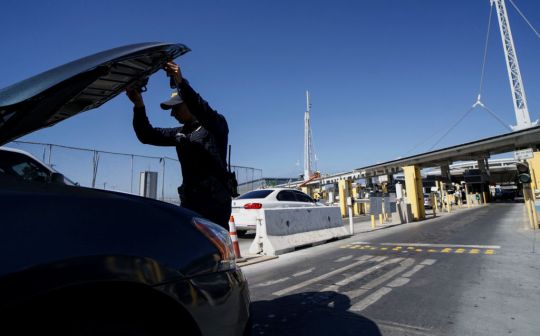The Department of Homeland Security unveiled a test facility June 27 to evaluate new biometric devices and technologies for improving security and efficiency at U.S. ports of entry.
The new Maryland Test Facility, located in Upper Marlboro, Maryland, is the result of a partnership between DHS’ Science and Technology Directorate and Customs and Border Protection. The facility will offer several fully-simulated environments, including an airport setting equipped with a variety of biometric systems in which new technologies and procedures can be tested.
 The Apex AEER project’s purpose is to determine how to use new technologies and processes to expedite screening of travelers. (Photo: DHS)
The Apex AEER project’s purpose is to determine how to use new technologies and processes to expedite screening of travelers. (Photo: DHS)The testing is part of the S&T Directorate’s Apex Air Entry/Exit Re-Engineering Project, known as AEER. The program was created to assist CBP in increasing its capacity to screen travelers entering the U.S. and to use biometrics to confirm the departure of certain foreign travelers from the United States.
CBP has been dealing with a 4 to 5 percent annual growth rate in passenger volume requiring screening. And while establishing a biometric exit capability is required by law, CBP faces a number of significant challenges. For example, U.S. airports and land border facilities were not originally designed for exit control and do not have a federal inspection area for outbound travelers.
But the new test facility will allow DHS scientists to evaluate new technologies in three customizable bays of testing space – approximately 10,000 square feet combined. Each bay is capable of housing any of the notional biometric air exit concepts of operation for evaluation, as well as accommodating up to 50 test subjects concurrently. The facility also contains extensive observation capabilities, allowing for the capture of both audio and visual data for analysis.
“Apex programs were developed in part to allow S&T to work collaboratively with other DHS components to solve problems of significant strategic importance,” DHS Undersecretary for Science and Technology Reginald Brothers said in a blog posted July 3 on DHS’ website. “Working together with CBP, we will test and incorporate all aspects of the technology and new procedures with volunteer participants from throughout the National Capital Region.”
Apex AEER has three main objectives:
- To understand the current operations in entry points at airports across different airport environments and configurations. Apex AEER will conduct airport visits to better understand operational processes and identify specific issues. The analysis will include recommendations for introducing or enhancing technologies and/or modifications to existing processes to expedite screening.
- To analyze potential approaches to meet the congressional mandate for biometric entry and air exit. The challenge is to increase the ability to confirm the identity of persons entering and departing the U.S. while ensuring that processes are efficient and keep pace with growth in international air travel.
- To develop tools that enable CBP to analyze the impacts of changes in traveler screening operations. All air entry and exit analysis, models, technology prototypes, and knowledge products will be transitioned to CBP for use after Apex AEER concludes.






